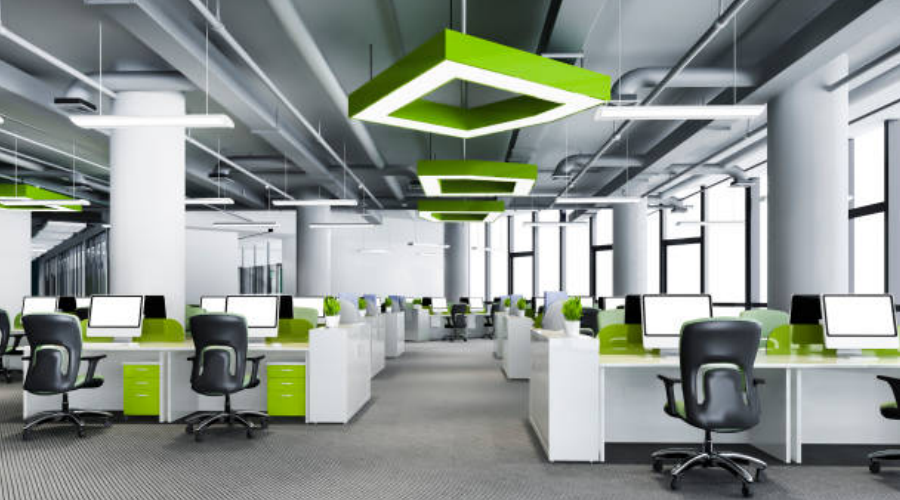A smart office is no longer a luxury in 2024—it’s essential for productivity and workflow efficiency. Technology makes setting up a smart office easier than ever, saving time, improving communication, and improving the workplace. Build a smart workspace that boosts productivity and team engagement.
1. Start with Smart Lighting
Smart lighting systems are a simple yet effective way to improve productivity. Adjustable lighting that mimics natural light can reduce eye strain and boost energy levels throughout the day. Many smart bulbs also offer color temperature settings, allowing you to switch from warm to cool light depending on the task at hand. You can automate lights to dim during certain hours or integrate them with motion sensors to ensure energy efficiency.
2. Use Voice Assistants to Streamline Tasks
Voice assistants like Amazon Alexa, Google Assistant, and Apple’s Siri can be valuable tools in a smart office. By integrating voice commands into your workflow, you can easily set reminders, schedule meetings, or get quick answers to common questions without interrupting your work. Many voice assistants also integrate with office software and smart devices, allowing you to control the office environment hands-free.
3. Smart Desks for Comfort and Health
Investing in smart desks can revolutionize the way you work. These desks adjust automatically to your preferred standing or sitting height and can be programmed to remind you to stand or move periodically. Many smart desks come with built-in sensors that monitor your posture and help you avoid the health risks associated with prolonged sitting. This focus on ergonomic comfort not only boosts productivity but also improves long-term health.
4. Wireless and Cloud-Based Collaboration Tools
A key component of any smart office is seamless collaboration. With cloud-based platforms like Google Workspace, Microsoft Teams, and Slack, team members can easily collaborate in real-time, no matter where they are. These tools allow for file sharing, video conferencing, and task management, keeping the entire team connected and up-to-date. Wireless printing and document sharing through smart devices also reduce clutter and increase workflow efficiency.
5. Automate Your Office Environment
Smart thermostats, like Nest or Ecobee, help maintain an optimal temperature in the office. By automating heating and cooling based on occupancy and preferences, you can create a comfortable environment while saving on energy costs. Window shades, air purifiers, and coffee machines can be controlled by time or voice to keep the office fresh and productive.
6. Smart Security for Peace of Mind
Security is an essential part of any office setup. Smart locks, security cameras, and motion detectors allow you to monitor your office space remotely. You can set up access controls that allow employees to unlock doors with their smartphones or keycards, track who enters the office, and ensure that sensitive areas are secure. The ability to monitor your office from anywhere provides an added layer of security, giving you peace of mind.
7. Use Productivity Apps and Analytics
Smart offices also incorporate software that tracks productivity. Apps like Toggl or RescueTime help monitor how time is spent on various tasks, offering insights into areas where improvements can be made. Some platforms analyze your workflow and make suggestions to boost efficiency, while others send reminders to help employees stay on track. These tools are essential for optimizing workflow and improving time management.
8. Smart Meeting Rooms for Seamless Collaboration
Meeting rooms equipped with smart technology can enhance team collaboration. Smart whiteboards, video conferencing systems with AI-based noise cancellation, and presentation tools like ClickShare make meetings more interactive and efficient. With wireless connectivity, employees can share documents and presentations without needing cumbersome cables or adapters, making meetings run more smoothly.
9. Power Your Office with Smart Plugs and Outlets
Smart plugs and outlets can turn any traditional office appliance into a smart device. By connecting printers, monitors, and other office equipment to smart outlets, you can control when devices turn on or off. This is particularly useful for managing energy consumption, and you can even set schedules for specific devices to power down during non-working hours, reducing electricity waste.
10. Enhance Employee Well-Being with Smart Tools
Lastly, a smart office should prioritize employee well-being. Devices like smart water dispensers that remind employees to stay hydrated or smart fitness devices that track movement can contribute to a healthier work environment. By creating an office space that prioritizes both comfort and health, you’ll see improvements in focus, energy levels, and overall productivity.
Conclusion
Building a smart office in 2024 requires using the proper technology to expedite processes, encourage collaboration, and boost productivity. Modern tools like smart lighting, desks, voice assistants, and automatic security can make your workspace more efficient. Investing in a smart office setup will promote productivity, morale, and well-being, creating a more successful and vibrant workplace.







